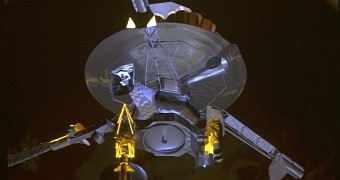It might seem too early to talk about microscopic robot swarms and experiments conducted not on them but with their help, but John Moores of the Centre for Research in the Earth and Space Sciences begs to differ.
Moores and some colleagues there at CRESS and at the University of Toronto came up with a way to send scanning probes into a planet's surface without using the normal parachute method.
Conventionally, a probe would need to be hurled into a planet's gravitational pull and deploy a parachute, or equivalent mechanism, when far enough along its descent trajectory.
However, the expenses involved in this approach are considerable, and there is always a good chance of the parachute malfunctioning, not deploying at all, or being destroyed for whatever reason.
But NASA and similar organizations keep sending them. Why? Because orbiting and flyby probes just can't do as much just by looking at a planet from space.
The advantages of smaller probes
Weight is one thing. Spacecraft weighing more than 300 kilograms / 660 pounds fall too slowly, especially on planets of lower gravity than Earth, which Jupiter qualifies as.
Thus, they are limited in how much data they can transfer because the relay has to be further away the slower the probe descends. Even on Earth the issue has shown an effect.
This has led to the invention of so-called micro, nano and cube satellites that weigh less than one kilo / 2.2 pounds. They have their own limits, however, in how much solar power they can absorb. They also rely on substantial infrastructure.
Obviously, the use of “micro” is hyperbole here, as odd as it sounds. But the size and mass difference definitely justifies the use of the term.
The challenge
The main drawback of micro probes is that they heavily rely on orbital platforms and drones to do anything. They can only take readings and send data for a set amount of time before rather terminally expiring.
Fortunately, there is a certain object called the European Space Agency (ESA) JUICE orbiter in the works, which should settle in the Jovian system by 2030.
If things go well, it will be able to act as a receiving unit for all the information sent back when a batch of micro satellites is hurled at Jupiter's atmosphere. The mission platform is called SMARA (for SMAll Reconnaissance of Atmospheres).
The micro drones to be used in the SMARA mission aren't expected to last more than 15 minutes, but that time should be enough for them to paint a clear picture of most of Jupiter's atmosphere if directed well enough. They will each transmit 20 megabits of data after all, with resolution greater than 15 kilometers per pixel. And before you ask, no, the Galileo probe that orbited Jupiter in 1995 had no camera.

 14 DAY TRIAL //
14 DAY TRIAL //